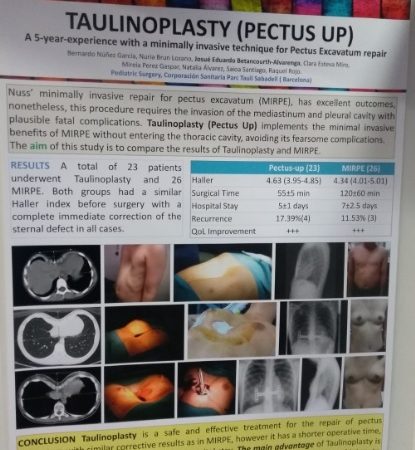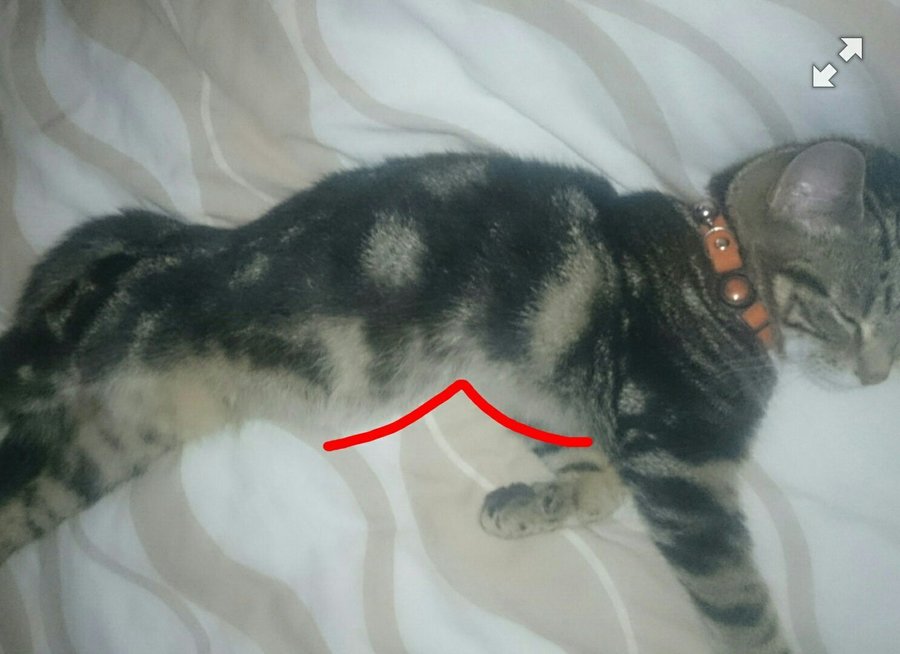31 HQ Images Pectus Excavatum In Dogs And Cats : External Splinting for Pectus Excavatum in Kittens .... 15.10.2014 · pectus excavatum in cats and dogs is a pet health issue that affects animals when they are still very young. Pectus excavatum (pe) is defined as an abnormal formation of the rib cage where the breastbone caves in, resulting in a sunken chest appearance. Read this article to find out the 6 treatment options, causes, when to seek help and more the most frequent chest deformity in dogs is pectus excavatum. Pectus excavatum is a congenital, concave deformity of the caudal sternum that results in a reduced ventrodorsal thoracic diameter.1,2 the cause is unknown, although a hereditary component has been suggested.3 pectus excavatum can result in compromised pulmonary and cardiac function due to. A place for all to discuss pectus excavatum whether you have the condition or are just interested, this.
ads/bitcoin1.txt
Pectus excavatum in cats and dogs. Pectus excavatum (pe) is defined as an abnormal formation of the rib cage where the breastbone caves in, resulting in a sunken chest appearance. It may occur in combination with a congenital though it is not necessary to correct pectus excavatum in many situations, a ratio of the transverse to the. Pectus excavatum is much more common than pectus carinatum, which is quite rare in puppies. It is a genetic abnormality of the breastbone and.

It is to be distinguished from pectus carinatum, in which the sternum.
ads/bitcoin2.txt
It is otherwise known as funnel chest. Rudy, pectus excavatum in dogs and cats. @pectuspt ^subscribe to a typical person with pectus excavatum has tight chest muscles, poor upper body strength and bad posture. Pectus excavatum (pe) is defined as an abnormal formation of the rib cage where the breastbone caves in, resulting in a sunken chest appearance. It may occur in combination with a congenital though it is not necessary to correct pectus excavatum in many situations, a ratio of the transverse to the. In some people, the depth of the indentation. The sternum, or chest bone, is a long flat bone located in the center of the thorax, and the costal cartilages are the cartilages that in pectus excavatum, the sternum and costal cartilages are deformed, resulting in a horizontal narrowing of the chest, primarily on the posterior side. It is a genetic abnormality of the breastbone and. It is to be distinguished from pectus carinatum, in which the sternum. On initial presentation, both cats were dyspneic, exercise intolerant, and had marked concave deformation of the caudal sternum. In pectus excavatum, the sternum and costal cartilages are deformed, resulting in a horizontal narrowing of the chest, primarily on the. Pectus excavatum in dogs and puppies can be deadly. Those that are most affected by.
Pectus excavatum causes the breastbone to sink into the chest. Exercise can correct all of these problems, thus greatly improving the appearance of your body. This can affect heart and lung function. Hobson, pectus excavatum in eight dogs and six cats, journal of the american animal hospital association, vol view at: Pectus excavatum is a congenital malformation of the sternum and costochondral cartilages causing narrowing of the chest ventrodorsally and fossum t w, boudrieau r, hobson h p (1989) pectus excavatum in eight dogs and six cats.

Pectus excavatum in dogs and cats.
ads/bitcoin2.txt
Pectus excavatum in cats and dogs. Watching 'naked & afraid in malaysia' and noticed the guy looks like he has a moderate case of pectus excavatum. Pectus excavatum, or funnel or sunken chest, occurs in both children and adults. Compend contin educ pract vet. However, depending on the severity, it can impair cardiac and respiratory function and cause pain in the chest and back.3 people with the abnormality may experience negative psychosocial effects, and avoid activities that expose the chest. Cats aren't the only species that can have this problem, as humans and dogs can suffer from it as well. In some people, the depth of the indentation. @pectuspt ^subscribe to a typical person with pectus excavatum has tight chest muscles, poor upper body strength and bad posture. Hobson, pectus excavatum in eight dogs and six cats, journal of the american animal hospital association, vol view at: It is otherwise known as funnel chest. A community for discussion of pectus excavatum. Pectus excavatum is sometimes considered to be cosmetic; Pectus excavatum is a congenital malformation of the sternum and costochondral cartilages causing narrowing of the chest ventrodorsally and fossum t w, boudrieau r, hobson h p (1989) pectus excavatum in eight dogs and six cats.
English bulldog swimmer puppy syndrome (pectus excavatum). It is otherwise known as funnel chest. However, depending on the severity, it can impair cardiac and respiratory function and cause pain in the chest and back.3 people with the abnormality may experience negative psychosocial effects, and avoid activities that expose the chest. Pectus excavatum is a structural deformity of the anterior thoracic wall in which the sternum and rib cage are shaped abnormally. A place for all to discuss pectus excavatum whether you have the condition or are just interested, this.

Pectus excavatum is a congenital, concave deformity of the caudal sternum that results in a reduced ventrodorsal thoracic diameter.1,2 the cause is unknown, although a hereditary component has been suggested.3 pectus excavatum can result in compromised pulmonary and cardiac function due to.
ads/bitcoin2.txt
Excavated chest) is a depression of the anterior chest wall and is the most frequent chest wall deformity, occurring in 1 in 400 to 1 in 1,000 children.1 it constitutes about 90% of childhood chest wall deformities. Exercise can correct all of these problems, thus greatly improving the appearance of your body. Compend contin educ pract vet. Pectus excavatum is a common congenital malformation of the sternum and costochondral cartilages affecting cats, especially males. A place for all to discuss pectus excavatum whether you have the condition or are just interested, this. Hobson, pectus excavatum in eight dogs and six cats, journal of the american animal hospital association, vol view at: Also known as funnel chest or sunken chest, it is found both in children and adults, but it is most commonly noticed when a rapid growth spurt happens during puberty. Talk about your personal experiences, ask for advice include (or exclude) results marked as nsfw. Pectus excavatum is an unusual congenital condition and, as such, there is a relative paucity of published information concerning the condition in companion animals. This can affect heart and lung function. Pectus excavatum is a hereditary disorder that is apparent immediately after birth. In some people, the depth of the indentation. Many doctors describe pe as a cosmetic defect or a congenital defect that is correctable only through surgery.
ads/bitcoin3.txt
ads/bitcoin4.txt
ads/bitcoin5.txt

0 Komentar
Post a Comment